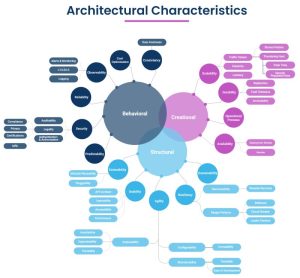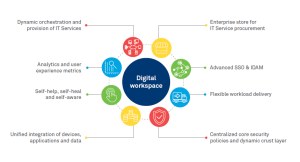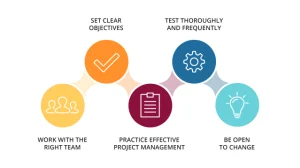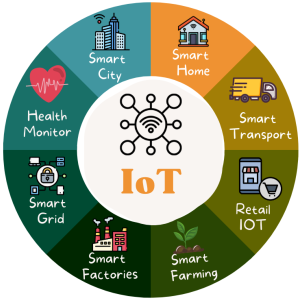The Importance of Cybersecurity Awareness Training: A Focus on Jain Software
In Business, Official BlogSecurity issues are an important factor in the modern world of internet use, and the problem of cybersecurity is relevant for every business, regardless of its size. Cybercrime continues to advance in sophistication, meaning businesses have to be proactive in safeguarding against high-tech theft. Another company that reached the top of its industry through providing innovative technological solutions is Jain Software , and they certainly recognize the necessity of proper security. The company ought to incorporate thorough cybersecurity awareness in the spirit of improving cybersecurity in the organization. This blog post focuses on why cybersecurity awareness training is crucial and how Jain Software innovation incorporates the training to protect its business and customers.
The Growing Threat Landscape
The rate and complexity of cybercrimes have risen over the past decade and have be responsible for billion dollar losses. The December 2019 report by Cybersecurity Ventures predicted that cybercrime will cost the world $10. It will take a $5tr industry by 2025 up from $3tr in 2015. These attacks can be as simple as phishing, ransomware attacks and are commonly characterized by sophisticated attacks such as advanced persistent threats (APTs) and zero-day vulnerability exploitation. Despite all technical measures and safeguards in place, the human element remains the most vulnerable and is therefore an essential aspect of cybersecurity.
Why People Should Take Cybersecurity Awareness Training Seriously
Reducing Human Error:
There is, however, agreement that human error is the primary reason exploits ensue and systems get breached. A team without knowledge of general cybersecurity risks will become susceptible to various intrusive acts such as phishing, inadvertent downloading of malware, or the use of vulnerable accounts and codes. Cybersecurity awareness training informs employees about these risks and train them to identify challenges and contravenes them.
Creating a Security-First Culture:
Culturally securing IT encompasses creating a security first culture to guarantee security programs are a priority throughout an organization. Training supported by organizations engulfs their thinking styles into a security-conscious attitude among the staff members. It assists in nurturing organizational culture that fosters main area of security integration into operational processes.
Compliance with Regulations:
One finds that compliance to a varying degree, involving legal requirements like GDPR, HIPAA, and PCI-DSS demand that organizations incorporate cybersecurity measures like training of employees. Companies can get into trouble and face large penalties as well as losing customer trust. Conducting cybersecurity awareness training is important to support the concept because it emphasizes the necessary recognition of these regulatory demands by employees.
Protecting Company Reputation:
A breach is an effective means of compromising the security of a company and causing potential damage that that affects the customer loyalty and company processes. Through proper training, the organizations such as Jain Software can follow high security measures to minimize the possible attacks and prove the firm’s preparedness to safeguard clients’ information.
Enhancing Incident Response:
Security awareness can be used in line with trained employees to as a first responder in cases of probable susceptibility to assaults. A word on awareness training helps in educating the worker on what is required of him/her when confronted with any act that is considered suspicious hence improving on the incident response capacity of the business.
Precisely, this paper aims at presenting Jain Software’s approach towards cybersecurity awareness training.
This is not the case at Jain Software where cybersecurity is not only an IT department issue but has an organization-wide approach. The company has implemented a comprehensive cybersecurity awareness training program that includes the following key components:
Regular Training Sessions:
Another source has it that Jain Software provides orientation to employees on new risks in cyber space and new measures by which such risks can be warded off. Such meetings may span a broad scope of issues as phishing, working with passwords, social engineering, and more.
Interactive Learning Modules:
Information that is presented in training program also includes specific e-learning modules which are more entertaining to the employees as opposed to engaging in the monotonous sometimes tedious training on cybersecurity. Such modules could include checks and exercises, for example, quizzes, and scenarios that may be given to the employees to solve in order to ensure that they understand the lesson that is being taught.
Phishing Simulations:
To evaluate the efficacy of the e-learning and to make certain that the employees are ready to handle actual threats, Jain Software often does simulated phishing. These simulations enable one to learn areas that require further enhancing the security of the company’s staff, and also know the general security status of the organization.
Role-Based Training:
There may be the possibility that some organizational units may require or possess higher level of security than others or that only some may even be in charge of security. Thus, at Jain Software, training is individually based and it is designed to meet these specific needs, so that all the employees receive not only the necessary information, but also valuable information, which can be employed in practice.
Security Awareness Campaigns:
For constant reinforcement, Jain Software has normal company security awareness campaigns in addition to its standard security training. These campaigns may consist of posters, newsletters that are used to maintain awareness among the employees and articles in the intra net regarding cybersecurity and key messages.
Policy and Procedure Reviews:
People on the payroll are always in a position to refresh themselves on the particularities of the company’s cybersecurity rules and regulations. These reviews act to keep everyone ‘on their toes’, and fully informed of the procedures in force and what is expected of them to prevent security breeches.
Second, the designation of the training objective to be achieved through training must be quantified to gauge the effectiveness of training.
To ensure that the cybersecurity awareness training program is effective, Jain Software employs several metrics and evaluation methods:
Knowledge Assessments:
Kirkpatrick’s model employs pre and post training tests aiming at evaluating the quantitative change in the levels of cybersecurity knowledge among the employees. Such assessments assist in determining the areas that require coverage and hence, get extra capacity.
Phishing Simulation Results:
Mutations of phishing are effective in delivering important information about the employees’ susceptibility to phishing assaults. With fewer employees accessing the fake phishing attacks, the training program has indeed been enhancing its impact and relevance.
Incident Reports:
Quantitative methods always refer to the extent that can be used to determine the trends of incidents that employees’ report asking the level of security awareness. The number of reported incidents has risen, particularly near-misses – this portrays a positive sign in a company to indicate that employees are far more conscious of potential hazards.
Employee Feedback:
General employee feedback from surveys/hotline meetings offers the means to assess the effectiveness of the training program and to identify the program’s weaknesses. This feedback is critical to fine-tune and improve the training program in every process that is involved.
Cybersecurity Awareness Training Today & Tomorrow at Jain Software
Jain Software recognizes the constant changes within the global threat experience and assures its customers that the company is determined to ensure its services are secure from any threats. It also has ongoing programs to train employees to address new forms of threat and uses new technology to improve its training programs. For instance, the Jain Software driving as an organization is experimenting with VR and AR as the powerful tools that can be deployed for realistic cyber training.
Moreover, it is also aimed at offering more intensive training in the coming years in specific activities of developers and IT administrators for improved efficiency and customer satisfaction at Jain Software. The newly proposed initiative of offering more comprehensive training on secure coding, as well as system hardening, would also seem to create a more robust layer of security for the enterprise.
Conclusion
In the current society that is dominated by information technology, cybersecurity awareness training should not be overlooked as it helps protect an organization’s valuables, information, and its reputation in cases of a breach. The extent of engagement of Jain Software in cybersecurity training is evident as the company underlines its commitment towards protection of its activities as well as clientele. With the right approach to training its employees, encouraging a security-first mentality, and ensuring its training programs are up to date and constantly adapting to the standard and ever changing cybersecurity threat landscape, Jain Software stands ready to face current and future threats.


 Software architecture entails a high-level view of a software system including components, their organization, and principles used in developing and enhancing the structure of the software system.
Software architecture entails a high-level view of a software system including components, their organization, and principles used in developing and enhancing the structure of the software system.













